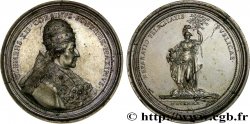Live auction - bry_635067 - LOUIS XIII Double tournois à la vieille tête, type de Warin, avec deux revers (perruque) 1643 Pont-de-l’Arche
You must signin and be an approved bidder to bid, LOGIN TO BID. Accounts are subject to approval and the approval process takes place within 48 hours. Do not wait until the day a sale closes to register. Clicking on "BID" constitutes acceptance of the terms of use of cgb.fr private live auctions.
Bids must be placed in whole Euro amounts only. The sale will start closing at the time stated on the item description; any bids received at the site after the closing time will not be executed. Transmission times may vary and bids could be rejected if you wait until the last second. For further information check the Live auction FAQ
All winning bids are subject to a 18% buyer’s fee.
All winning bids are subject to a 18% buyer’s fee.
| Estimate : | 400 € |
| Price : | 325 € |
| Maximum bid : | 359 € |
| End of the sale : | 09 March 2021 17:11:36 |
| bidders : | 3 bidders |
Type : Double tournois à la vieille tête, type de Warin, avec deux revers (perruque)
Date: 1643
Mint name / Town : Pont-de-l’Arche
Metal : copper
Diameter : 20 mm
Orientation dies : 6 h.
Weight : 2,28 g.
Rarity : R3
Coments on the condition:
Ce double tournois est frappé sur un flan large et très légèrement voilé. Exemplaire recouvert d’une patine marron. Petite cassure de carré à 5 heures sur le carré portant le différent d’atelier B
Catalogue references :
Predigree :
Exemplaire provenant de la collection André Kuhn et illustré sous le n° 517 B. p. 313 du CGKL
Obverse
Obverse legend : + DOVBLE. TOVRNOIS. 1643.
Obverse description : Trois lis posés 2 et 1.
Reverse
Reverse legend : B. DOVBLE. TOVRNOIS. 1643..
Reverse description : Trois lis posés 2 et 1.
Commentary
Une perruque est une monnaie qui présente deux faces identiques permettant le plus souvent de tricher lors d'un tirage à "pile ou face". Cet exemplaire a été frappé avec un carré de revers présentant un B (différent de la fabrique de Pont-de-l’Arche selon les récents travaux d’Arnaud Clairand, BSFN janvier 2021 à paraître) et l’autre aucun différent.








 Report a mistake
Report a mistake Print the page
Print the page Share my selection
Share my selection Ask a question
Ask a question Consign / sell
Consign / sell
 Full data
Full data














